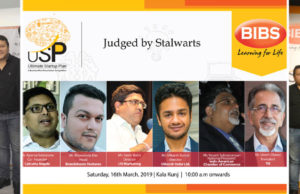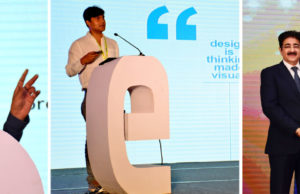
WoT's Hot
The annual Tata Steel Kolkata Literary Festival is a veritable delight for ‘Word’ lovers who throng the venue to rub shoulders with their favorite authors and listen to them speak about their books, their thoughts, beliefs and inspiration. One of the most interesting sessions was the one where authors, Anita Anand and William Dalrymple, discussed their combined work, “Kohinoor” a chronicle of the Kohinoor Diamond. Despite not being the largest diamond in the world, the Kohinoor is definitely the most famous. Few, however, are aware of its chequered history. Legend has it that it is also a cursed stone and carries with it a long and turbulent history, which makes one delightfully curious to know more about this amazing gem.
Through their session, the authors, Anita Anand and William Dalrymple, traced the story of the Kohinoor Diamond from the time of Emperor Shah Jahan and its place on the Peacock Throne, to its present day home in the Tower of London. The gem was taken from the Mughals to Afghanistan by Nadir Shah. Later, it came back to Lahore where it was worn by Maharaja Ranjit Singh. This fascinating story was accompanied by anecdotes and incidents, a visual presentation of paintings through history, and the saga of destruction and bloodshed the Kohinoor seemed to carry with it wherever it went.
The authors went on to explain how the British, in their lust of this famous gem for their queen, after the death of Maharaja Ranjit Singh, forcefully separated Prince Dalip Singh (his only surviving son) from his mother. The child was only 5 years old at the time. They locked his mother in a tower and got the child, who had no family member by his side, to sign away the Kohinoor Diamond.
But the tragedy doesn’t end there. Even the journey taken by the gem from India to Britain was riddled with ill-health and accidents. Sadly, after all the hard work of acquiring the famous Kohinoor, when it was put on display in England, the British public were extremely disappointed at this uncut, flat-topped, dull stone. This urged the monarchy to commission diamond cutters from Amsterdam to reshape the stone. Unfortunately, it resulted in the stone being reduced to half.
Whether or not you believe in curses, the presentation by the authors was riveting, aroused the curiosity and left one in no doubt that one would pick up a copy of the book to know what else went into this fascinating story.
The annual Tata Steel Kolkata Literary Festival is a veritable delight for ‘Word’ lovers who throng the venue to rub shoulders with their favorite authors and listen to them speak about their books, their thoughts, beliefs and inspiration. One of the most interesting sessions was the o
Other Articles in REAR WINDOW WOT
What to read next
Featured articles

Welcome Festive Season in Glam, Latin Quarters Launches new #PujoBling Collection with Monami Ghosh
by WOT













































